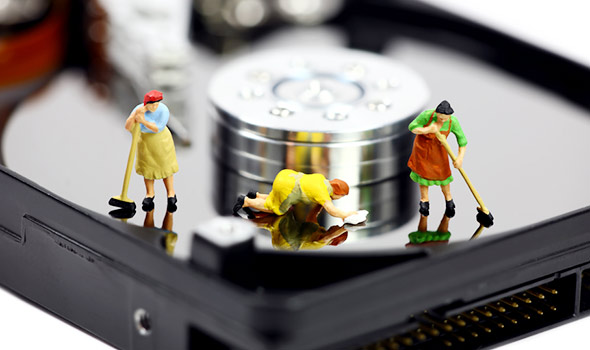So you’re looking to reliably backup and restore your data? There’s some tricks and tips that separate the backup pros from the beginners. No matter what program you end up using, the tips below will make sure you avoid the most common pitfalls.
The rules for backing up and restoring your data is pretty similar no matter which media you’re using, from just restoring your iTunes data on your Apple iPhone, or fully recovering a Windows Server. That means once you learn the tricks below, you’re well equipped for all sorts of data recovery scenarios.
1. Test Restore Your Backups
Any data can be corrupted over time, no matter how securely you back it up. The reason? Physics. The universe just doesn’t like data. Stray particles can quite literally zap zeros to ones, introducing corruption when your computer is turned off.
This is not the only cause of corruption, either. Magnetic drives can lose orientation. Electrically charged media loses its charge. Optical media breaks down as plastic degrades. And then there’s the chance your backup job simply failed, or one of your applications caused corruption in it.
In short? Corruption in your backups, even if you’ve got the best backup software and hardware in the world, is something you’ve got to actively fight. And the best way to do that is a test restore.
How to Perform a Test Restore
Whenever you back up your data, immediately try restoring a few files from it. This simple lifesaving trick tells you if the backup is corrupted. If it is, you can figure out what went wrong and perform another device backup.
It sounds simple, but even some professionals don’t test restore their backups, and end up paying heavily for it. There’s nothing worse than going to restore from backup data and finding out it’s corrupted.
Test restores are also a great exercise to learn what you’ll need to do when you need to do when you need your data restored, kind of like an emergency drill.
It’s also a very quick way to find out exactly how reliable and fast your chosen backup software is in an emergency. If you’re backing up data for a business, it gives you a good idea of how long you’ll need to wait before getting your data back—a question other employees and your boss will no doubt be asking you.
2. Take Steps to Avoid Media Failure
If you fail to restore data from a backup, the primary cause is typically media failure. It’s not uncommon for people to improperly handle and store their backup device.
Make sure you read the vendor’s instructions! With tape backup, make sure you replace the tapes regularly, clean the drives according to the manufacturer’s schedule, and discard any suspicious tapes. Some caution now saves you big later.
Disk-based backup is not a safeguard against media failure, either. It’s certainly lower than with tape, but device failure still happens.
With data backup for a simpler device like mobiles and tablets (e.g. iPhones, iPa, Android etc), it might be simplest to back up your device to the cloud. Here are some easy instructions for backing up your Android device to Google Cloud storage, or your Apple devices to the iCloud.
3. Ensure There is Space at The Backup Destination
To make sure your data is always reliably restored, make sure you’ve got enough space on your backup device. If there’s not enough space on your restoring device, chances are your backup will fail to complete, which means a bungled backup restore.
Unfortunately, a lot of people don’t realize until they want their device restored, and find out their backups haven’t been running properly—which is the worst possible time to find this out.
Preventing this is a simple case of doing some math. For example, if you’re performing full weekly backups of a 500 GB server, make sure your backup device isn’t a 1 TB external drive. Even on a smaller scale, if you’re backing up your 32 GB iPad to iCloud, your 5 GB of free storage isn’t going to be enough.
Most people don’t realize their backups are failing to transfer because their backup device is full. The reason for this is A) people typically automate it, and B) there’s not always a message if it fails.
Besides properly planning how much storage space you need, you can minimize the risk further by finding backup software that has a great reporting component. E.g. BackupAssist sends you UI popups, e-mails on job successes or failures, etc.
4. Remove Human Error from your Backup Plan
For the micro-manager in us, It may be comforting to have total control of your backup plan. But if hardware error is the number one reason for backup failure, human error would be a close second. After all, if your hardware fails because someone didn’t read the instructions, is it hardware error or human error?
Make sure that the human factor is taken out of your backup scheme as much as possible. If your backup scheme requires someone remember to do so every night, eventually they’re going to forget. The best backup software is the kind that allows you to schedule backups but still keeps you in the loop with regular messages.
Any people involved in your backup plan should follow proper backup practice. E.g. Always eject external hard drives and related storage devices before disconnecting or powering them off, don’t perform improper shutdowns, etc.
5. Know Your Software and Keep It In Date
If you want to reliably backup and restore your data, make sure and your backup software is properly configured. Sometimes you might not have it set to backup through a firewall, leading to incomplete backups or ones that fail utterly.
Make sure the backup software you choose is always in-date. This means it’s keeping pace with any other software you install on your device. Also make sure that any apps that you’re backing up are supported by the backup software. Even if the software says it does, it’s good to trial this out for yourself with a test restore.
To Restore from Backup Perfectly: Proper Preparation!
You may notice a common theme across all five points—the key to a perfect restore is a perfect backup. Data backup is all about preparation for the worst—the better you prepare, the better off you’ll be.
Make sure you pick backup software that’s good for you. We’ve written a free backup software guide on what backup software is best for your device or OS. After all, you should always properly research your backup software to make sure it meets your needs.
One we suggest for Windows Servers is BackupAssist. You can download the 30-day fully featured trial and try it out for yourself.






